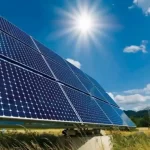As citizens across Pakistan expressed their concerns over excessive electricity bills, power companies in the country are once again under scrutiny.
After receiving a significant amount of negative feedback on social media, Islamabad Electric Supply Company (IESCO) and Lahore Electric Supply Company (LESCO) released a statement on their Twitter profiles outlining how Fuel Charge Adjustments (FCA) are applied to customer invoices.
Government and the DISCO Like LESCO and IESCO Always Retain the Majority of Influence Over Electricity Tariffs
The restricted function of distribution businesses was made an effort to be made clear in both statements. However, these claims won’t do much to appease Pakistan’s nearly 34 million energy users, who believe DISCOs are neglecting their duties.
Although the public may believe that these corporations have a significant impact in determining electricity pricing, it appears that this is not the case in reality.
National Electric Power Regulatory Authority (NEPRA) and the Pakistani government, through the Ministry of Energy Power Division, have established a standard slab-wise pricing policy that sets the price of electricity for consumers throughout Pakistan.
The true expenses of creating power, however, are substantially higher. The government subsidizes the difference on behalf of the public, eliminating any possibility of “Unfair.”
Distribution companies are dependent on the government to a) decide how much subsidy to provide and b) release the money owed to them by the government. So, to streamline cash flows, the latter is required.
A corporation is effectively operating at a “loss” of ten rupees per unit of electricity if it produces power at a cost of 20 rupees with the expectation of receiving a subsidy of 10 rupees from a third party.
Power businesses are not independent entities. They need to oversee operations and pay gas suppliers. Having money released slowly puts you in a risky situation.
This is problematic because houses, workplaces, industries and all other forms of economic activity depend heavily on energy. In Pakistan, no distribution business has the right to directly modify the price of energy charged to users without the regulating body’s permission.
On the contrary, a number of global and macroeconomic reasons are driving up global petroleum costs to pretty much unheard-of heights. The most precise estimates could not have anticipated the effects of a pandemic, the war in Ukraine, or the dramatic decline in the value of the rupee versus the dollar.
Similarly, a rise in the consumption of expensive furnace oil and Regasified Liquefied Natural Gas (RLNG), both importing fuels, is being caused by the unavailability of natural gas and a declining share of hydel generation.
The benefit of cheaper gasoline can be distributed to a broader portion of the population if government companies SSGC and SNGPL prioritize supplying fuel to the power sector.
On behalf of the distribution businesses, the Central Power Purchase Authority (CPPA) can only submit monthly data on the fuel costs they have spent to produce the necessary units of power.
The regulator has concluded that expenses above the reference rates must be collected from customers under Section 31(7) of the NEPRA Act (XL of 1997).
The possible solution would be for the government to pay for these expenses through subsidies, but this would only be feasible if the nation’s economy was sufficiently stable.
Even so, the present circumstance seems terrible. Arif Habib’s independent analysis reveals that because of rising RLNG and furnace oil prices, the cost of producing energy has risen by 160% in just one year.
The customers are also bearing the cost of this increase. Recently, the Pakistani government launched a relief plan for June 2022’s fuel charge adjustments.
Customers with sanctioned loads under five kW who consumed 300 units or less in June were defined as the eligibility criteria. Customers were first helped by DISCOs in compliance with the informed directives, but nationwide protests developed once more over an allegedly “heavily biased” implementation that left out other customers.
Even though DISCOs provided a description of the methods on their social media channels, it was challenging to get past people’s feelings about their imagined involvement in it.
The government’s tax collection is another issue. This is essentially a strategy to broaden the tax base in order to satisfy IMF standards, much like the reduction of subsidies on customer electricity prices. However, in this case, the distribution businesses merely serve as enablers and officials as decision-makers.
The Finance Act 2022, which was hotly opposed by commercial consumers throughout Pakistan, brought the updated, fixed sales tax regime across the nation.
Since then, the state has revoked the decision, and commercial consumers nationwide will now be subject to a variable sales tax as a proportion of their bills.
Conclusion
Electricity bills below Rs 20,000 will be imposed a 5% fee, while usage over Rs 20,000 will be taxed at 7.5%. A major service that the country receives is from the power sector.
But the present situation shows that this industry is a weak house of cards resting on weak ground. The regulator and the Pakistani government continue to exercise the monopoly of authority over establishing tariffs. Unfortunately,
DISCOs can only reiterate their restricted function. However, because they are at the top of the supply chain for electricity, they must endure the pain and rage of customers.



![Electricity Per Unit Rate Likely to Rise to 50 Rs per Unit [LESCO] LESCO per unit price rise 2023](https://lescobillonline.net/wp-content/uploads/2023/03/LESCO-per-unit-price-rise-2023-150x150.webp)

